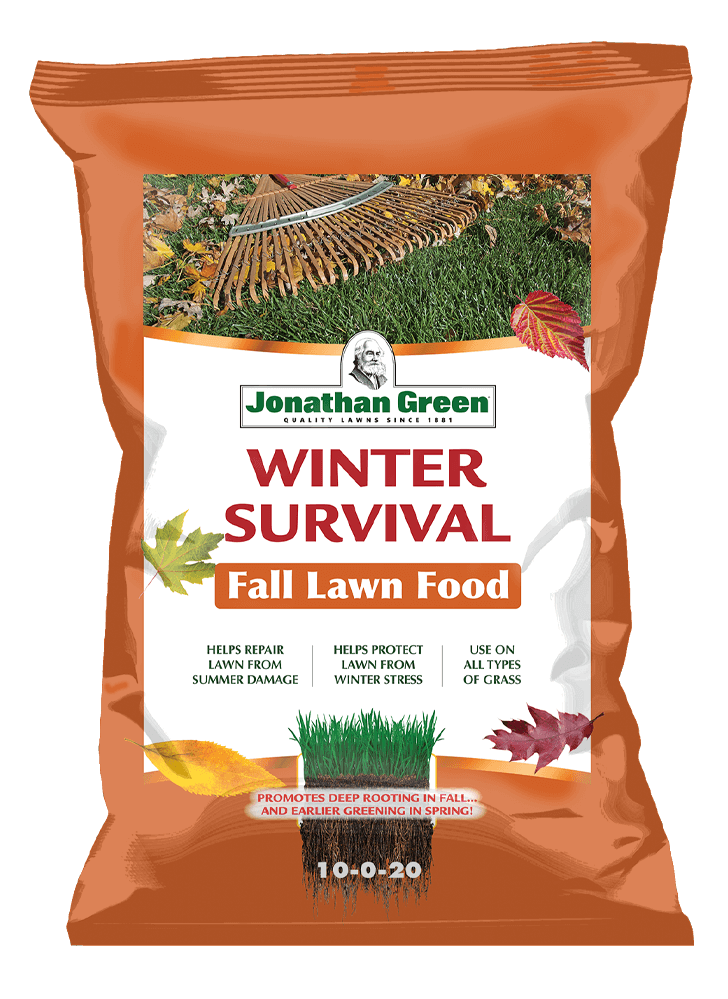Should I Fertilize My Lawn in the Winter?
Although you won’t need to fertilize your lawn in the winter when it’s not actively growing, there are things you can do to care for the lawn in all seasons. Jonathan Green’s New American Lawn Care Plan is an easy way to know when and what to feed your lawn and how to do it.
Lush green lawns are our business at Jonathan Green. We have been perfecting the art of green lawns since 1881 and have continued this tradition for five six generations. We employ the latest scientific technology and research to ensure that we have the best products on the market, so you end up with a strong, healthy, dark-green lawn.
Caring for Your Lawn in Winter
Get your lawn ready for the winter with Jonathan Green’s Winter Survival Fall Lawn Fertilizer. Spread it anytime from early September through mid-November when air temperatures are cooler and the soil is still warm enough for grass roots to grow deep.
Winter Survival will give your lawn the nutrients it needs to get ready for winter, maintain its deep-green color, and help it to handle the stress of cold desiccating winter winds while fending off early spring turf diseases, such as snow mold.
You’ll also want to keep driveways, walkways, and sidewalks clear of snow and ice to keep them safe for sure footing. Apply Jonathan Green Melt-A-Way™ Ice Melter which contains sodium chloride, calcium chloride, and potassium chloride for a faster 3-way melting action in temperatures as low as 5° F.
Mentioned Products
Dormant Seeding
Did you know that you can actually plant grass seed during the winter season? It’s known as dormant seeding. If you put down grass seed in November or December, the seed will lay dormant until the soil starts to warm in spring. Dormant seeding can be risky, but it can save you the process of seeding in the early spring when the ground may be very muddy.
The dormant seeding technique works best if done when snow is just about to cover the ground but before the ground has completely frozen.
Even in the winter, there are warmer days when the surface of the soil warms up and then refreezes. This causes small cracks and fissures in the ground that grass seeds fall into and get covered, so good seed to soil contact is achieved. The seeds will start to sprout as soon as the ground warms to a consistent 55° F, and the soil will have all the nutrients it needs to support seed growth.
The risk occurs if the winter weather happens to warm up. If it warms enough to melt the snow, it may also warm up enough for the seeds to sprout, and those newly sprouted seeds will not be strong enough to survive the cold desiccating winter winds and freezing temperatures. If this occurs, rake out the dead seedlings before replanting grass seed again in the spring.
For more information on whether you should fertilize your lawn in the winter, visit Jonathan Green online or stop by your local independent home and garden retailer for answers to your questions.

